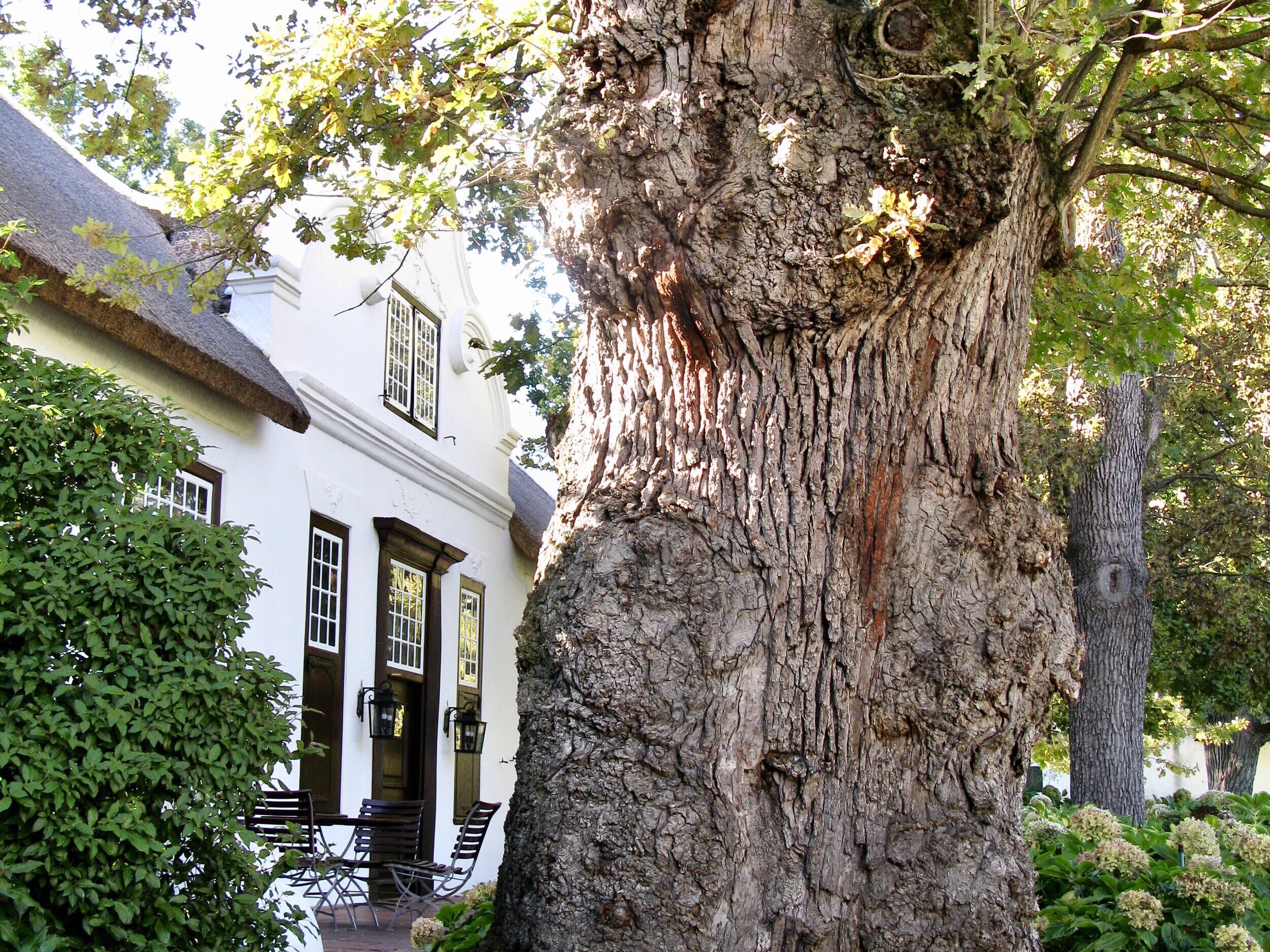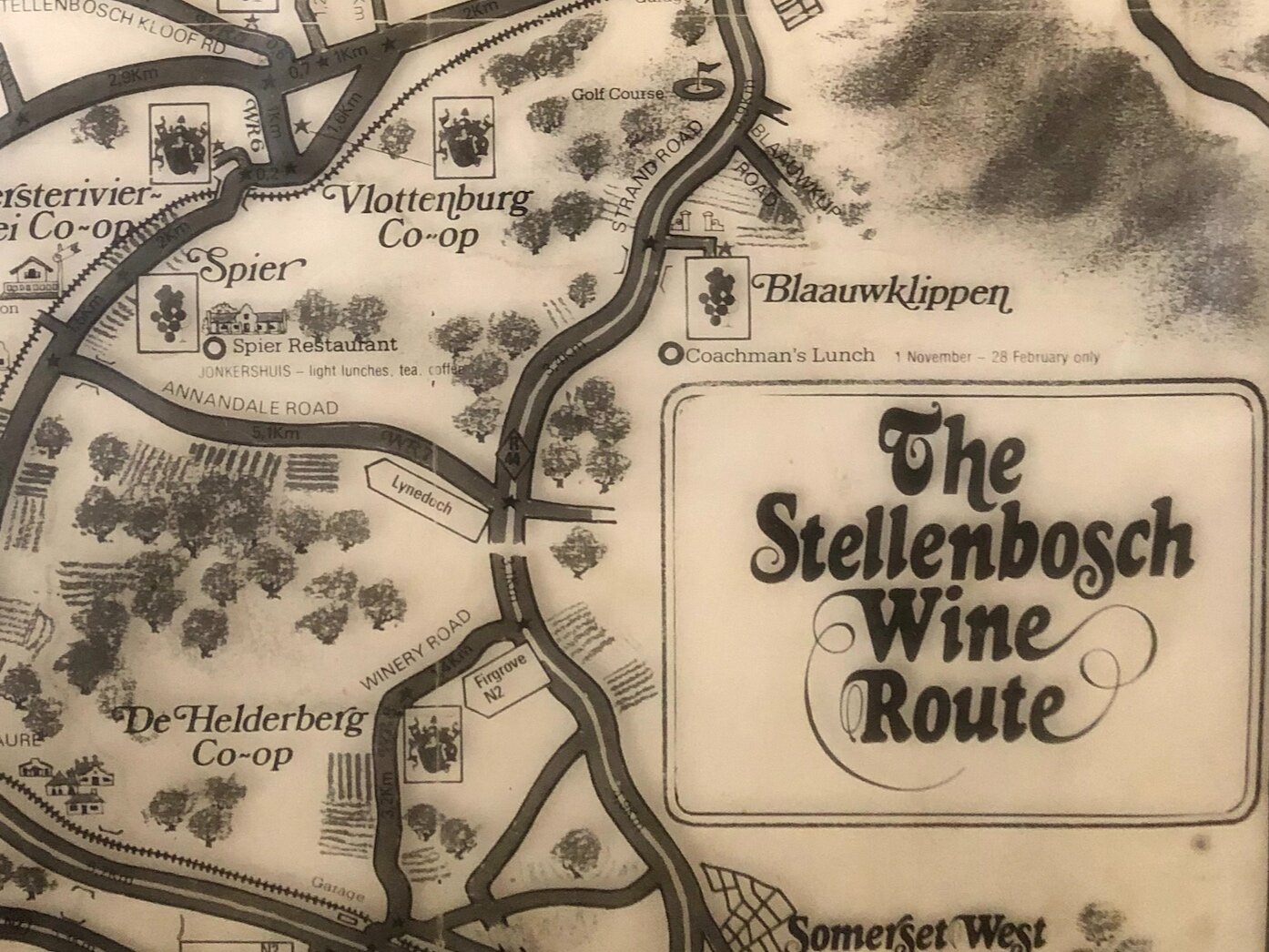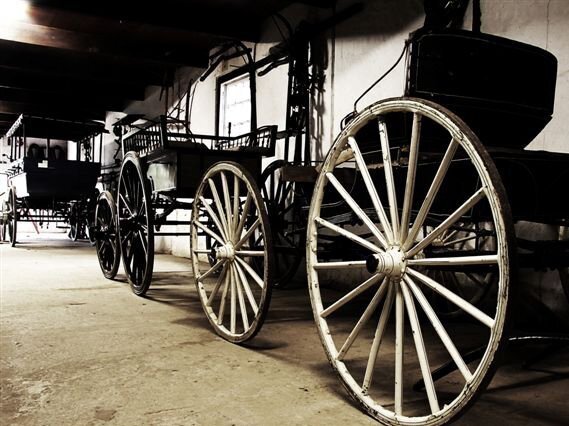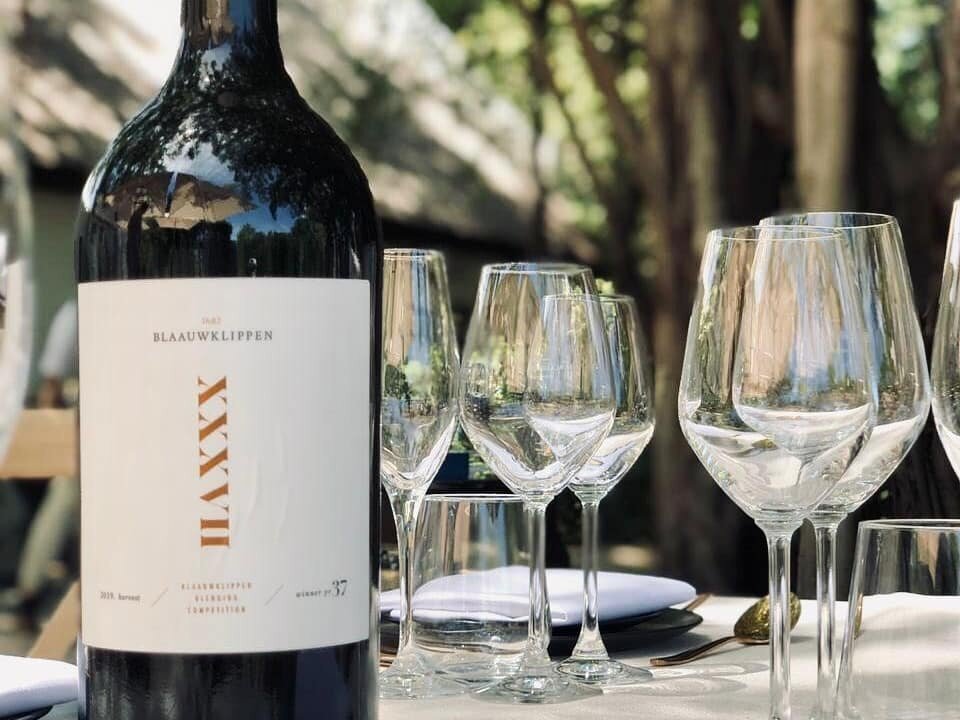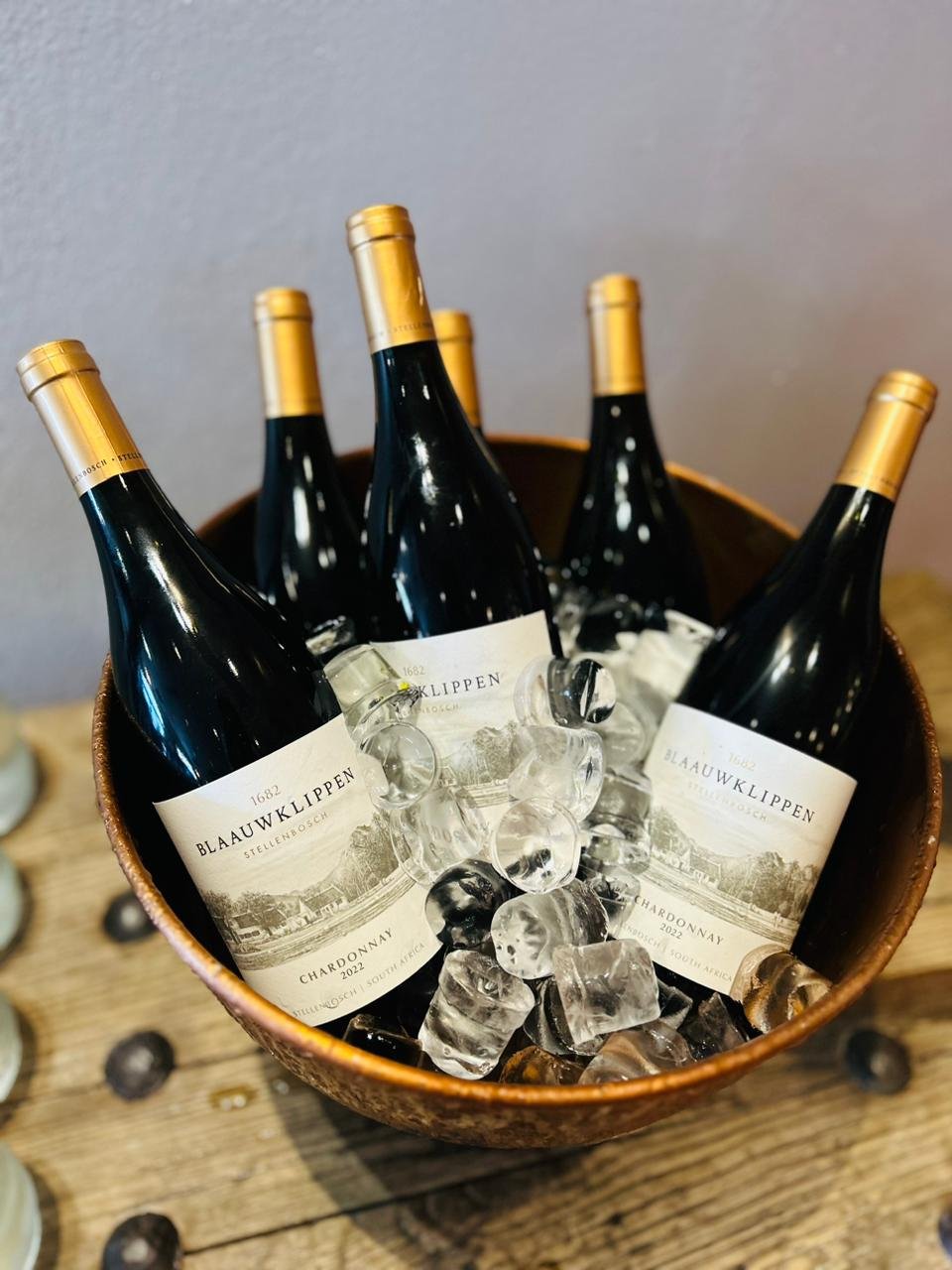
Explore our History
1659
The first wine from Cape grapes
In 1652, Jan van Riebeeck wrote to the VOC and urged them to send over vines to plant, as the fertile valley under Table Mountain showed much promise for winemaking.
The ship Leeuwin cast anchor at Table Bay in July 1655. With them, they had the first vine cuttings packed into some wet earth and sewn up in sailcloth, which the sailors had to keep damp during the journey to the Cape.
The vines grew and flourished. Four years later, South Africa’s first harvest took place. On Sunday, 2 February 1659, Jan van Riebeeck noted in his diary: “Today, praise be to God, wine was pressed for the first time from Cape grapes.”
1679
Simon van der Stel & the foundation of Stellenbosch
In 1679, Simon van der Stel was appointed as Commander and later the first Governor of the Cape.
He set out to explore the region to further develop the Cape colony. Upon camping by the “Eersterivier”, he immediately recognised the value of the fertile valley. Incorporating his name, the town of Stellenbosch was established. Within a year, numerous families settled there and the town began to grow.
Today we celebrate its rich history as the second oldest town in South Africa where many prominent leaders, artists, writers and other influential people have called Stellenbosch home.
1682
The beginning of Blaauwklippen's story
Our first owner was Dutchman Gerrit Jansz Visscher (Visser) who arrived at the Cape from the Netherlands in 1662.
After the foundation of Stellenbosch, land was later allocated by Simon van der Stel to a few free burghers. Gerrit received the land upon which our beautiful farm is set today. Gerrit married the 15-year-old Jannetje Thielemann in the Castle in 1675.
In those days, it was not unusual for such a young girl to get married. Jannetje was Cape-born and it is claimed that this was the first official union between a free burgher and a woman born at the Cape, not in Europe.
1688
First vines planted
Although Visscher was a potter by trade and had no proper knowledge of farming, he took on the daunting task to start clearing the forested land and within six years of receiving the farm, he already planted 1000 vines by 1688. No wine, however, was recorded yet.
1690
Grant of ownership
Eight years after Gerrit Visscher received the land in promise, the official Grant of ownership was signed by Simon van der Stel on 9 November 1690. On the same day, Visscher however, sold the farm to French Huguenot Guillaume Niel (Willem Nel).
A framed copy of the Grant is currently on display in our Tasting Room.
1700
Our farm is named
Guillaume Niel (Willem Nel), our second owner, is said to have given the farm its original name “De Blaauwe Klippen”. The name Blaauwklippen, meaning Blue Stones, is said to be derived from the granite found on the farm.
There are various outcrops spread over the farm and in the riverbed. Due to exposure, the visible exterior of the rocks are a greyish-brown colour, but they reveal blue colours on the inside when broken.
1707
Old wine cellar
One of the oldest buildings on the farm dates back to 1707.
It was most likely first used as a barn and was later transformed into a working cellar, indicating a booming wine trade in the Stellenbosch area.
This extraordinary building still stands today, reminding us of our Estate’s rich heritage and significant contribution to the South African Wine Industry.
1709
First leaguer of wine
Guillaume Niel, the owner between 1690-1722, was a French Huguenot who came to the Cape to flee religious persecution in his country of origin.
Many Huguenots had a good working knowledge of winemaking and although Niel was apparently a tailor by trade, he immediately set out to expand the vines and wine production when he acquired Blaauwklippen in 1690.
Within a few years, he had increased the original 1000 vines to 3000. According to the tax rolls, there were 6000 vines on the farm by the year 1709 and the first leaguer (about 570 litres) of wine was reported.
1720
The Jonkershuis
Blaauwklippen is one of Stellenbosch’s earliest farms, established a mere 30-odd years after the Cape was settled by European colonists and a mere three years after the foundation of Stellenbosch. The oldest buildings on the farm are between 250 and 300 years old.
The Jonkershuis, first built around 1720, is much older than the Manor House and might have originally been the family’s residence, but there also was an even older house, long since demolished.
A room closest to the Manor House was once used as coach storage. It was later turned into a classroom for a small farm school at the end of the 1800's. The Jonkershuis gable was completed in 1780.
1770
Giant oaks
There are some very old oak trees on the farm. There used to be rows of oaks in front of the major farm buildings, some of which are still standing.
Jan van Riebeeck, the first Governor, brought oak seeds with him in 1652 because it was known that wood was scarce at the Cape. The planting of trees, especially oaks, was heavily promoted. Twenty thousand oak trees were sent to Stellenbosch when the town was founded in 1679. The planting of oaks was even one of the conditions stipulated in many early transfer deeds.
In Blaauwklippen’s earliest grant of 1690, it is stipulated that all trees that are cut down on the farm must be replaced by new ones, preferably oaks. Even in those faraway days, they were already conservation minded. Unfortunately, it is not possible to date the trees currently standing on Blaauwklippen, but some are estimated to have been planted around 1770.
During the fire of April 2024, a few of the spectacular oak trees were sadly lost.
1789
The Manor House
The Manor House bears the date 1789 on its main gable, but the building was most probably already built two to three decades earlier. Gables were often added to houses several years after the original house was built and often the date of the erection of the gable was inscribed on the gable field.
Over the centuries the Manor House evolved into the extraordinary structure we see today. It was home to numerous families and one can imagine the sound of children’s laughter around the yard as you stand under the giant oaks.
From old kitchen heaths, ladders leading up to the loft, underground wine cellars by the staff quarters, remnants of an outside bake oven by the Jonkershuis, a fowl run added in the 1800’s and the pieces of broken Delft pottery that appears in the garden every once in a while, the Manor House and Jonkershuis continue to tell the story of one of the oldest farmyards in Stellenbosch.
1818
Second cellar erected
By 1818, the farm was enlarged by the addition of so-called quitrent land. This land was previously government owned and granted for grazing use only. In 1833 more quitrent land was added.
The making of wine and brandy became ever more important on the farm and a second wine cellar was built.
An increase in brandy production probably necessitated the extension of cellar capacity as the tax returns of 1825 indicate half a leaguer of brandy, 70000 vines and 30 leaguers of wine.
1827
The Millhouse
Blaauwklippen used to have a watermill in the 19th century. The Mill was mentioned in Frans Rossouw’s will, meaning it already existed by 1827.
A small building on the other side of the Blaauwklippen river is said to have been the mill. It was an overshot mill, with the water fed onto the mill-wheel by an elevated channel leading from the river.
Parts of a millstone is built into the top of the current kitchen stairs at the Manor House.
1850
Rossouw’s winning achar
When Francois Rossouw died in 1834, the farm was left to his son Jacobus. An interesting snippet about Jacobus is that he won a prize for his achar at the local agricultural show around 1850.
It is quite unlikely that it was he, himself who made the achar, as gender roles were much more confined in those days, with the men working the land and the women doing the cooking and housekeeping. Most likely it was entered under his name due to the patriarchal practices of the times, but made by his wife or kitchen staff.
1877
Betty Uys
On one of the window-panes in the Manor House the words “Betty Uys” and “Bloemhof Sem, Stellenbosch” are scratched out. Sem is short for Seminary, the common name for ladies’ schools in those days.
It is said that Betty Uys, daughter of then owner Jacobus Uys, wrote it on the window with her mother’s engagement ring in the mid to late 1880’s. Betty was born in Durbanville on the farm Maastricht. Her father bought Blaauwklippen in 1877, when she was only four years old.
This window pane, was sadly destroyed during the fire of April 2024.
1886
Phylloxera in the Cape
In 1886, disaster struck the Cape Colony when the phylloxera insect entered the country.
It resulted in large financial losses for wine farmers across the region when eight million vines eventually had to be destroyed, leaving many farmers bankrupted. It presented significant setbacks in the country’s wine production.
Despite the phylloxera scourge, Jacobus Dirk Uys, owner between 1877-1894, shows a yield of 50 leaguers of wine and two leaguers of brandy.
1890
Goodbye gables
A fire most likely damaged the Manor House in the late 1800’s. Thereafter, the thatched roof was replaced with corrugated iron for safety reasons. Because the walls of the house had to be raised during this process, the gables were demolished.
A rare photo taken in 1938, captures the Manor House with its corrugated roof and clipped gables.
When Stephen Palmes took ownership between 1947-1964, he restored the demolished gables and thatched roof to their former glory.
1890’s
Jonkershuis farm school
During previous centuries, many farms operated government primary schools. A room in the Jonkershuis on Blaauwklippen was used for this purpose until the early decades of the 20th century. According to a strong tradition, Sybella (Issie) Krige, later to become the wife of the well-known statesman Jan Smuts, taught there for a while before her marriage in 1897.
Issie became affectionately known as “Grandma Smuts” during World War II, when she founded the Gifts and Comforts Fund, which sent homemade gifts and delicacies to soldiers on the frontlines.
1897
Dr JT Hahn
Hahn was a prominent, highly intelligent German-born scientist who specialised in linguistics and ethnology. He published learned pamphlets and articles on a large variety of subjects, including one called Viticulture in South Africa: A scheme for the development of the Cape wine industry (1888).
He bought Blaauwklippen in 1897 from Dr Friedrich A Hauf, but unfortunately, his theoretical knowledge did not guarantee successful farming, and he was declared bankrupt within 18 months.
He bought the farm with the financial aid of Cecil John Rhodes and the farm briefly reverted back to Rhodes upon his insolvency.
1899
Cecil John Rhodes
The enduring myth that British imperialist Cecil John Rhodes owned Blaauwklippen for one day, is technically true.
In 1897, Rhodes financially assisted the Namibian-born scientist Dr Johann Hahn to buy Blaauwklippen.
Within eighteen months, however, Hahn was declared insolvent and the farm reverted to Rhodes, who sold it again the very same day, clearly to a buyer who had already been lined up.
There is also a myth that Rhodes bought the farm in order to strip the Manor House of its valuable authentic woodwork for reuse on Groote Schuur. Apart from the fact that he only technically owned the farm for part of a day, the dates of these two events also do not match.
1901
Jamestown
In 1899 owner Johannes Roux starts to sell pieces of Blaauwklippen land. The Stellenbosch suburb of Jamestown is laid out on what was once two sections of Blaauwklippen. The original settlement was started through the efforts of German missionary Jakob Weber. Weber started working in the Stellenbosch area in 1882 in the service of the Renish Missionary Society.
The land was intended as a housing project for Rhenish parishioners. It was divided into so-called watererwe, which were long, narrow strips of fertile farmland leading down to the river. The houses were built at the top end and the rest of the narrow plot was planted with small-scale crops which were watered from the river. These early farmers were reputedly the first to farm with strawberries in the country.
1903
Pieter de Waal
Pieter de Waal, who owned the farm in the early 20th century, was known as Pieter Eenarm (Peter One Arm). It is said that his right arm had to be amputated after he was wounded by a spear.
De Waal, a strict teetotaller, pulled up all the vines that survived the phylloxera disease, because he viewed the use of alcohol as evil. Instead, he farmed with tobacco (ironically, he did not seem to find anything wrong with that!), pigs and apples.
Pieter also ended the dopstelsel (tot system) on his farm. According to this system, which was followed for centuries, labourers received tots (which actually amounted to mugfulls) in the mornings before they started work, at the midday break and when they stopped working in the evenings. It was such an entrenched part of the farming system in the Cape at the time, that it is hard to imagine how he managed it since many labourers refused to work if they did not receive their tots.
1915
A valuable photograph
A precious family picture from 1915 tells the story of our Manor House development. In 1890 the gables were clipped off and the thatched roof replaced with corrugated iron. The house also had no shutters on the windows. To the right, a closed-off side court is visible.
The image gives us a glimpse of Pieter and Gertruida de Waal, with some of their children enjoying a day under the giant oaks on the Manor House front lawn.
The two trees in the middle are still original. Willem de Waal, their son, who was also the owner of Blaauwklippen between 1937-1947, mentions in a letter to Mr. Boonzaaier that the trees succumbed to storms in 1927 and 1936 and later got replaced with the ones we see today.
On the western side of the house, the giant oaks also got removed over the years. In 2020 new trees were planted.
1953
The great flood
Calamity struck Blaauwklippen in April 1953, when exceptionally heavy rains led to a flash flood.
The river burst its banks and large tracts of the farm were heavily inundated, up to 40 metres in places.
A small wooden sign was fixed to the bathhouse reading “Flood level April 1953”.
70 years later, on 14 June 2023, this Flood level, was surpassed by 1 cm, when the Blouklip River, breached its banks again, due to heavy rainfall.
1971
Stellenbosch Wine Route
Blaauwklippen became one of the first wine farms to join the Stellenbosch Wine Route.
In 1971 Stellenbosch became the first wine region in South Africa to establish a wine route as an organised network of wineries at which the tourist could experience the product of the vine and tune into the soul of the region's winelands.
The Stellenbosch Wine Routes currently provides a co-ordinated network of more than 150 wineries, each offering a unique cellar-door experience for the wine-lover and tourist.
As part of the Cape Winelands, the Stellenbosch Wine Routes are part of the six most popular tourist attractions in South Africa and are also connected to the global Great Wine Capitals Network.
1972
Graham Boonzaaier
In 1972, Graham Boonzaaier purchased the rundown estate bringing with him an extraordinary future vision for Blaauwklippen.
All the buildings received extensive restorations and new buildings were erected. He invested in a brand new winery and vineyard replanting program and along with Walter Finlayson as winemaker, Blaauwklippen’s first wines were released in 1980.
Guests could enjoy wine tasting, eat Cape Malay-inspired meals at the Cape Kitchen Restaurant surrounded by historic items inherited from previous owners over the centuries.
Boonzaaier displayed one of the biggest carriage collections in the country and visitors could enjoy a classic coach ride through the vineyards and oak-lined avenues with the farm's very own coachman Malaky.
1975
Walter Finlayson Legacy
In 1975 Walter Finlayson joined then owner Graham Boonzaaier and took on the position of winemaker at Blaauwklippen.
Together, they transformed the farm by replanting vineyards and creating extraordinary wines which laid the building blocks for the wine estate Blaauwklippen has become today.
During his time as winemaker, Walter excelled and was awarded the Diners Club Winemaker of the Year title in 1981 and 1982, for his Zinfandel and Cabernet Sauvignon 1980.
It is said that Zinfandel grapes were first introduced to South Africa by Walter in 1977.
1984
Blending Competition
Since founded by Walter Finlayson in 1984, Blaauwklippen has hosted what is known as South Africa’s longest-running wine blending competition, where wine-lovers from across the country are invited to try out the art of wine blending for themselves.
Entrants are supplied with a kit of wines from Blaauwklippen, measuring vessels, specifications on the use of the varietals and a brief on the final product. The judging panel consists of some of the nation’s most astute wine personalities, as well as Blaauwklippen winemaker Narina Cloete.
In addition to the trophy, the winning club earns recognition on the label of a limited edition magnum release of their blend bottled, which is then sold by Blaauwklippen. Currently we celebrate 40 years of the Blaauwklippen Blending Competition.
1999
Guten tag!
In 1999, the German Schorghüber Corporate Group, Farmer’s Markt Landhandel, acquired Blaauwklippen. During their ownership until 2017, the emphasis was placed on producing premium red wines.
To this end, they implemented a comprehensive barrel replacement programme with French and American oak barrels. The Blaauwklippen Barrel Selection was specifically created to showcase these premium wines.
The Hospitality sector received a revamp, which included a new French cuisine restaurant, new wine tasting facilities and a wine shop. The Blaauwklippen Family Market was established in 2011, offering visitors a chance to relax under the trees while enjoying good food and wine.
2016
Meet Narina
Narina Cloete has been the winemaker at Blaauwklippen since June 2016. She graduated with an Honours BSc Agriculture (Oenology) cum laude from the University of Stellenbosch and has completed harvests at Glen Carlou Vineyards, Dornier Wines, AA Badenhorst Family Wines and Stellenzicht Wine Estate.
Narina loves expressing her creative side through winemaking and strives to create wines that expresses the terroir of the vines and to give the consumer the chance to experience Stellenbosch and South Africa through Blaauwklippen’s wines.
2018
A new era
Towards the end of 2017, Blaauwklippen was purchased by a consortium of South Africa businessmen with a passion for the Winelands and the South African wine industry.
Under new ownership, the team implemented and extensive turnaround strategy that includes:
The renovation of the historic Manor House and Jonkershuis into a five-star accommodation offering
The establishment of the Glass Cathedral as a one-of-a-kind wedding venue
The renovation of the Tasting Room and restaurant
A new and premium product portfolio
The establishment of a Farm Shop & Deli which has since become a new restaurant.
A brand new Velosolutions Pump Track and a state-of-the-art kiddies play area at the new Bike park
2022
Chardonnay
The first Blaauwklippen Chardonnay since 1993 launched in 2023!
This elegant wine showcases some rich citrus and orange blossom tones with hints of yellow peach and Crème Brûlée. Its creamy, buttery palate combines well with Thai curries, seafood and Spring weather.
Shop this fresh, well-balanced beauty on our online store and get it delivered to your door anywhere in South Africa.
2023
New Offerings
Our new Tasting House offers seasonal wine pairings, perfectly harmonized by Blaauwklippen’s winemaker, Narina Cloete together with the new chefs from Cucina di Giovanni.
Immerse yourself in the captivating world of art at our IS Art Gallery, nestled within our exquisite Tasting House.
The newly renovated restaurant offers Italian-inspired cuisine by Chef Cucina di Giovanni.
2024
Flames of Desolation
On 7 April, Stellenbosch’s oldest wine farm, dating back to 1682, was struck by a devastating fire due to gale force winds, which brought destruction and significant damage to our historic Jonkershuis, built in 1720, the Manor House, built in 1760 & finished in 1789, the Millhouse across the river, as well as the Cathedral built in 2018, a popular wedding venue.
The burden of devastation is lightened by the gratitude that no lives were lost during this unimaginable event.
For now, the accommodation section of the estate will be closed to the public, but the good news is that the rest of the facilities were left unscathed. The Tasting House, De Blaauwe Kitchen, Bike park and all other activities have reopened to the public on Wednesday, 10 April and we look forward to welcoming guests back to the Estate.
2025
Honouring the Past, Rebuilding the Future – Reopening November 2025
In true Blaauwklippen spirit, tragedy was met with resilience.
Restoration began swiftly, driven by a deep commitment to heritage preservation and authentic craftsmanship. Every stone, beam, and archway is being carefully restored with reverence for the estate’s rich architectural legacy.
We are proud to announce that the Manor House and Jonkershuis will reopen in November 2025, welcoming guests back to experience the soul of Blaauwklippen once more.
While our accommodation remains closed for now, the rest of the estate is open and thriving. Visit us to enjoy award-winning wines, gourmet food, outdoor adventures, and the enduring spirit of one of Stellenbosch’s most historic wine farms.
Join us as we honour the past and shape the next chapter of Blaauwklippen’s story.
Down to earth with a rich history and winemaking tradition, Blaauwklippen produces wines of distinction in harmony with the simplicity of country living.
In 1977 the first Zinfandel vineyards to be planted in South Africa were established on Blaauwklippen with the first vintage released in 1980. This pioneering spirit led us to produce world-class Zinfandel for decades and today we remain one of only three Zinfandel producers in the country.
Launched in 1984, the Blaauwklippen Blending Competition is the only one of its kind in South Africa, aimed at consumers rather than producers, inviting wine-lovers to try out the art of wine blending for themselves.
Narina Cloete has been the winemaker at Blaauwklippen since June 2016. She graduated with an Honours BSc Agriculture (Oenology) cum laude from the University of Stellenbosch. She serves on various wine judging panels including the South African Young Wine Show, FNB Top 10 Sauvignon Blanc, Cape Vintners Classification, Blaauwklippen Blending Competition, Veritas Awards and the Old Mutual Trophy Wine Show. She also judged in Spain at the 2018 Zarcillo International Wine Competition.
The Blaauwklippen Family Market, held every Saturday and Sunday, is a popular Winelands destination with an array of food, arts and crafts, live music, a monthly antiques fair and the estate’s child-friendly facilities and activities.










